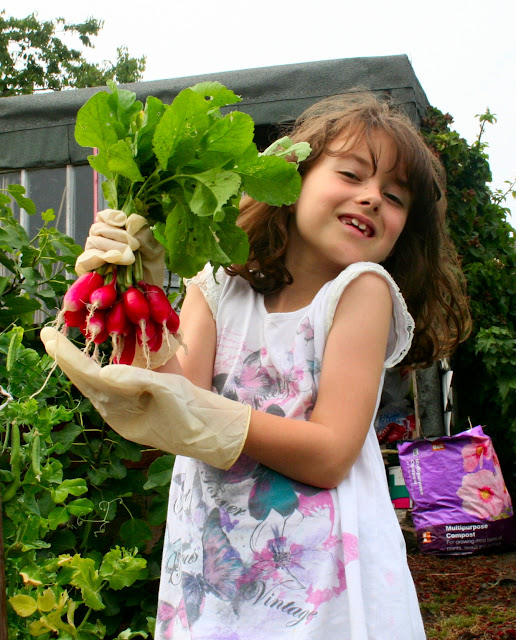PLAN A HEALTHY GARDEN
Television,
newspapers and other forms of media bombard us with the need to look after our
health.
In our
youth we never gave a thought about health as we just assumed we were healthy.
We had youth on our side, were always very active as few people had cars or
televisions and computers had not been invented. We walked to the hills for
recreation, climbed trees, (and often fell out of the trees, but we just
bounced back on our feet) cycled everywhere, went swimming, skating, running, played
football and enjoyed the less active sports of snooker and pool. Then as we
matured we went dancing, smoked and started drinking and enjoyed our staple
diet of fish suppers, sausages, pies and mince which we considered very tasty
as long as no-one ruined it by adding a few green vegetables. Nothing seemed to
affect us, though there was always a strain on the wallet.
Moving on
to today and being able to look back in hindsight, the long term effects are
there to be seen. So many friends from the past paid the price of too much
smoking, drinking and a very poor diet. The
youth of today have an even bigger problem, as no-one walks any more as cars
take us everywhere, television is on all the time and is very entertaining and
kids spend a lot of time in a chair in front of a computer or other forms of
social media. Instant meals and takeaways are very popular and cooking skills
are being lost, apart from those who enjoy it as a hobby. I am amazed at so
many newcomers to allotment life who grow their vegetables, harvest them but
have not a clue on how to cook them. They also do not appreciate how cheap it
is to live a healthy life with fresh fruit and vegetables, though preparing and
cooking food can be quite time consuming and hard work.
However
the media is now educating us on the evils of our way of life, warnings of
obesity, lack of exercise, heart problems and diabetes. Then when you factor in
the age effect for us beyond retirement it compounds the problem. Recently when
standing on a chair to reach some ripe brambles high up on my bush, the chair
collapsed and I crashed down onto a nearby Ben Conan blackcurrant bush, which
did it no favours whatsoever. This time I never bounced back on my feet, so
maybe I am losing my youth. No great damage was done as Ben Conan is very
hardy.
Having a
garden and allotment provides a perfect solution to most of today’s problems.
Exercise is required in varying amounts all year round to cultivate, weed,
plant and harvest the produce.
One small
plot can provide a massive range of fresh produce for year round use.
Summer is the berry and salad season and combined
with perfect growing weather crops have been prolific. Cabbage and
cauliflowers, courgettes, peas, French beans, beetroot, turnip and early
potatoes are all available at the same time. Strawberries started very early,
then rasps, black currants, gooseberries, cherries and saskatoons were coming
in one after another.
If anyone
is worried about reaching their minimum of five fresh fruit and vegetables a
day they should get a garden or allotment. I reach my five a day with my
breakfast mixing in fruit, bananas and grapes into my muesli, then lunch will
add another five, then by supper time a few more.
However
summer is the season of plenty, and as we go into autumn there is almost just
as much other crops available to give us more variety. Onions, leeks, kale,
autumn maturing cabbage and cauliflower, Swiss chard, Swedes will all have
there day and autumn fruit trees will start to mature.
Autumn crops are sown in summer on land vacated as early
crops are harvested. There is still plenty time to sow more lettuce, radish,
spring onions, rocket and late peas. Autumn is also the time to harvest the
apples, plums, pears if you have any, grapes, figs, brambles and autumn raspberries.
I am also hoping my Flamenco perpetual strawberry will give me a crop of autumn
fruit, though this is its first year and growth has not been great.
However
towards mid autumn it is too late to catch another quick maturing crop, but
soil can suffer from leaching if it is left unplanted till next spring so now
is the time to sow a green manure crop of clover, vetches, ryegrass or mustard
if you do not have a clubroot problem. Some green manures can be left to
overwinter but others will need to be trampled down and dug in if they start to
flower. These crops wont give you anything healthy to eat, but the exercise of
all that digging in is very good for your heart.
Plant of the week
Rudbeckia is an herbaceous perennial native to North
America though some forms are biennial and annuals. They flower in September to
November and vary in height from one to six feet. Colours are mainly yellow and
orange with a darker centre hence the common name, Black Eyed Susan.
They like
heavy, moist but well drained soil and planted in full sun or partial shade.
Only the very tallest will need support.
END










